Solving Europe’s energy challenge
13 September 2022
 Published in partnership with
Published in partnership with

One of the most apparent aspects of the Russia-Ukraine conflict is the rapid increase in energy prices brought on by Moscow’s reduction in exports to its European neighbours.
In 2021, Russia was the largest exporter of oil and gas to Europe, supplying some 40 per cent of its energy requirements, including 100 per cent of the total gas imports of five EU states, according to the International Energy Agency.
The continent’s three largest economies – Germany, Italy and France – depended on Russian gas for 46 per cent, 34 per cent and 18 per cent of their energy needs, respectively.
The imposition of sanctions on Russia in March 2022, followed by Moscow’s threat to suspend hydrocarbon exports, has resulted in a surge in energy prices.
Opec’s crude basket price increased from $78 a barrel at the start of the year to $122 in early June, while Henry Hub natural gas prices more than doubled from $3.8 a million British thermal units (BTUs) to $8.7 a million BTUs over the same period.
Expensive energy bills
This rapid energy inflation has been passed on to consumers through higher electricity bills.
In the UK, for instance, the energy regulator Ofgem estimates that the default tariff price cap will more than double from £1,300 ($1,529) in January to £3,580 in October, and reach a peak of £4,266 in the first three months of 2023, when demand will be highest during the colder winter months.
Replicated across the continent, this is likely to result in millions of households entering ‘fuel poverty’ as they struggle to pay their energy bills.
The Mena region is well-positioned to plug the shortfall in Russian gas exports as European governments scramble to source gas from new markets to reduce their dependence on Moscow
Reducing reliance on Russia
The subject was not surprisingly a central theme of debate at Siemens Energy’s Middle East & Africa Energy Week held in June, where attendees agreed on two main conclusions drawn from the crisis.
The first was that the Middle East and North Africa (Mena) is well-positioned to plug the shortfall in Russian gas exports as European governments scramble to source gas from new markets to reduce their dependence on Moscow.
The GCC alone globally exports almost exactly half of the 411 billion cubic metres of gas that Russia supplies to Europe annually. Most of this is in the form of long-term liquefied natural gas (LNG) contracts to east Asia, but there is some limited capacity available – primarily from Qatar – to fill part of the shortfall.
European nations have been quick to recognise this. For example, following a visit to the region by its Vice-Chancellor and Climate & Energy Minister Robert Habeck in March, Germany – Europe’s largest energy market – is now fast-tracking the construction of two LNG import terminals and has entered a long-term energy partnership with Qatar, the world’s largest LNG exporter.
Energy Week
The second principal finding from the Middle East & Africa Energy Week was that the conflict would act as an additional catalyst for renewable energy development as nations globally attempt to diversify their energy sources and reduce their dependence on imported fossil fuels.
This was in keeping with the results of a poll of up to 400 of the event’s participants. The survey, which forms the central component of the Siemens Energy’s Middle East & Africa Energy Transition Readiness Index, revealed that attendees considered the acceleration of renewables as the highest priority among 11 energy policies in their efforts to tackle the climate crisis, as well as the one with the greatest potential impact.
The Middle East is already taking a clear lead in this as it sets ambitious targets for clean, renewable capacity. For example, Saudi Arabia is looking to scale up its share of gas and renewable energy in its energy mix to 50 per cent by 2030.
Similarly, the UAE has set ambitious targets for 2050: to improve energy efficiency by 40 per cent, reduce emissions from the power sector by 70 per cent and increase the share of renewables in the energy mix to 44 per cent.
While Europe is looking for alternative gas supplies to urgently fill the gap in the short term, there is little doubt that in the longer term renewable energies and hydrogen will dominate the energy markets
Dietmar Siersdorfer, Siemens Energy
Hydrogen
In the long run, the energy crisis also provides momentum for the development of hydrogen production in the region, one of four other central themes emerging from the Energy Week.
 Demand for hydrogen in Europe alone is forecast to double to 30 million tonnes a year (t/y) by 2030 and to 95 million t/y by 2050. Thanks to its geographical position, the Middle East is ideally located to meet this demand either by ship or pipeline.
Demand for hydrogen in Europe alone is forecast to double to 30 million tonnes a year (t/y) by 2030 and to 95 million t/y by 2050. Thanks to its geographical position, the Middle East is ideally located to meet this demand either by ship or pipeline.
Today, there are at least 46 known green hydrogen and ammonia projects across the Middle East and Africa, worth an estimated $92bn, almost all of which are export-orientated.
“While Europe is looking for alternative gas supplies to urgently fill the gap in the short term, there is little doubt that in the longer term renewable energies and hydrogen will dominate the energy markets. That the robust mix of the energy (gas and renewables) will make the energy system more resilient and support energy supply security while we, at the same time, move us at a fast pace into a renewable future,” says Dietmar Siersdorfer, Siemens Energy’s Managing Director for the Middle East and UAE.
Electricity to Europe
Another unintended consequence of the Ukraine crisis is to turn attention to direct electricity supply from the Mena region to Europe.
Although plans for exploiting the high solar irradiation levels and space provided by the Sahara desert through initiatives such as DESERTEC have long been mooted as an alternative solution, a combination of the crisis, lower costs and improving technologies are increasing impetus.
Some projects are already capitalising on the trend. For example, a joint venture of Octopus Energy and cable firm Xlinks recently received regulatory approval for a 3.6GW subsea interconnector between Morocco and the UK, using energy produced from vast solar arrays in the desert.
A similar project is the 2GW high-voltage EuroAfrica connector currently under construction linking Egypt with Greece via Crete. Plans are also under way for a third power connection between Morocco and Spain, which today is the only operational electricity link between Africa and Europe.
With the Egyptian-Saudi interconnector now under construction, and agreements recently reached for interconnectors between Saudi Arabia and Jordan and Kuwait and Iraq, the region is growing closer to supplying power to Europe directly.
“The development of regional grids has brought the prospect of direct current connection with Europe ever closer,” says Siemens Energy’s VP and Head of Grid Stabilisation in the Middle East, Elyes San-Haji. “Due to its plentiful solar resources, the Mena region could become an energy hub with a global network of high-voltage highways and super grids.”
Connection benefits
Interconnection makes sense on many levels. Not only would Europe benefit from a diversified, economical and renewable energy source, but its season of peak demand, winter, coincides with when supply is lowest in the Middle East, and vice-versa. Power transfer would not necessarily have to be in one direction only.
The Ukraine conflict and ensuing energy crisis have created an unprecedented opportunity for the Middle East and Africa to become more closely integrated with Europe. Whether in the form of fuel exports, either gas or potentially green hydrogen fuels, or direct electricity supply, the Arab world has never had a better chance to become the energy partner of choice for its European neighbours.
Related reads:
Exclusive from Meed
-
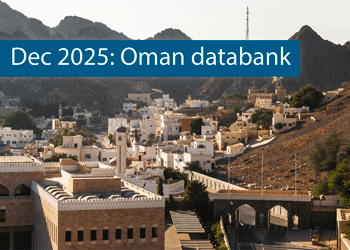 Oman’s growth forecast points upwards
Oman’s growth forecast points upwards24 December 2025
-
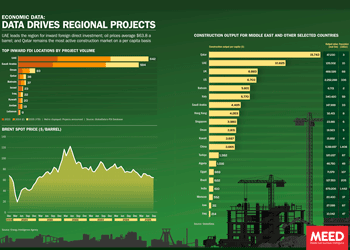 December 2025: Data drives regional projects
December 2025: Data drives regional projects23 December 2025
-
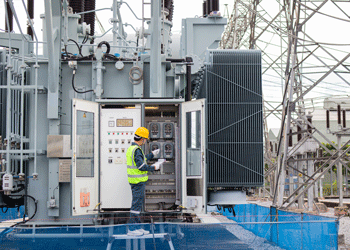 Local firm bids lowest for Kuwait substation deal
Local firm bids lowest for Kuwait substation deal22 December 2025
-
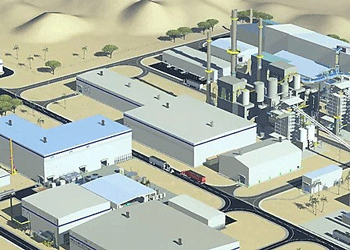 Saudi-Dutch JV awards ‘supercentre’ metals reclamation project
Saudi-Dutch JV awards ‘supercentre’ metals reclamation project22 December 2025
-
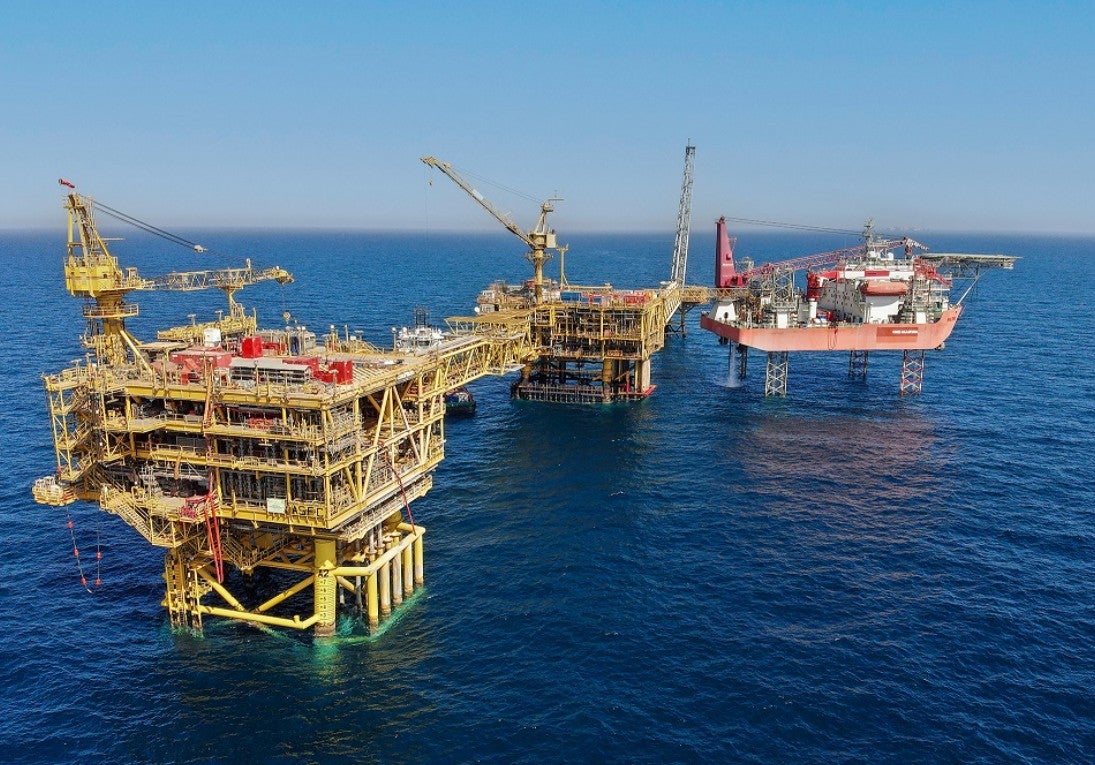 QatarEnergy LNG awards $4bn gas project package
QatarEnergy LNG awards $4bn gas project package22 December 2025
All of this is only 1% of what MEED.com has to offer
Subscribe now and unlock all the 153,671 articles on MEED.com
- All the latest news, data, and market intelligence across MENA at your fingerprints
- First-hand updates and inside information on projects, clients and competitors that matter to you
- 20 years' archive of information, data, and news for you to access at your convenience
- Strategize to succeed and minimise risks with timely analysis of current and future market trends

Related Articles
-
 Oman’s growth forecast points upwards
Oman’s growth forecast points upwards24 December 2025

MEED’s January 2026 report on Oman includes:
> COMMENT: Oman steadies growth with strategic restraint
> GVT & ECONOMY: Oman pursues diversification amid regional concerns
> BANKING: Oman banks feel impact of stronger economy
> OIL & GAS: LNG goals galvanise Oman’s oil and gas sector
> POWER & WATER: Oman prepares for a wave of IPP awards
> CONSTRUCTION: Momentum builds in construction sectorTo see previous issues of MEED Business Review, please click herehttps://image.digitalinsightresearch.in/uploads/NewsArticle/15306449/main.gif -
 December 2025: Data drives regional projects
December 2025: Data drives regional projects23 December 2025
Click here to download the PDF
Includes: Top inward FDI locations by project volume | Brent spot price | Construction output
MEED’s January 2026 report on Oman includes:
> COMMENT: Oman steadies growth with strategic restraint
> ECONOMY: Oman pursues diversification amid regional concerns
> BANKING: Oman banks feel impact of stronger economy
> OIL & GAS: LNG goals galvanise Oman’s oil and gas sector
> POWER & WATER: Oman prepares for a wave of IPP awards
> CONSTRUCTION: Momentum builds in construction sectorTo see previous issues of MEED Business Review, please click herehttps://image.digitalinsightresearch.in/uploads/NewsArticle/15306140/main.gif -
 Local firm bids lowest for Kuwait substation deal
Local firm bids lowest for Kuwait substation deal22 December 2025
The local Al-Ahleia Switchgear Company has submitted the lowest price of KD33.9m ($110.3m) for a contract to build a 400/132/11 kV substation at the South Surra township for Kuwait’s Public Authority for Housing Welfare (PAHW).
The bid was marginally lower than the two other offers of KD35.1m and KD35.5m submitted respectively by Saudi Arabia’s National Contracting Company (NCC) and India’s Larsen & Toubro.
PAHW is expected to take about three months to evaluate the prices before selecting the successful contractor.
The project is one of several transmission and distribution projects either out to bid or recently awarded by Kuwait’s main affordable housing client.
This year alone, it has awarded two contracts worth more than $100m for cable works at its 1Z, 2Z, 3Z and 4Z 400kV substations at Al-Istiqlal City, and two deals totalling just under $280m for the construction of seven 132/11kV substations in the same township.
Most recently, it has tendered two contracts to build seven 132/11kV main substations at its affordable housing project, west of Kuwait City. The bid deadline for the two deals covering the MS-01 through to MS-08 substations is 8 January.
https://image.digitalinsightresearch.in/uploads/NewsArticle/15305745/main.gif -
 Saudi-Dutch JV awards ‘supercentre’ metals reclamation project
Saudi-Dutch JV awards ‘supercentre’ metals reclamation project22 December 2025
The local Advanced Circular Materials Company (ACMC), a joint venture of the Netherlands-based Shell & AMG Recycling BV (SARBV) and local firm United Company for Industry (UCI), has awarded the engineering, procurement and construction (EPC) contract for the first phase of its $500m-plus metals reclamation complex in Jubail.
The contract, estimated to be worth in excess of $200m, was won by China TianChen Engineering Corporation (TCC), a subsidiary of China National Chemical Engineering Company (CNCEC), following the issue of the tender in July 2024.
Under the terms of the deal, TCC will process gasification ash generated at Saudi Aramco’s Jizan refining complex on the Red Sea coast to produce battery-grade vanadium oxide and vanadium electrolyte for vanadium redox flow batteries. AMG will provide the licensed technology required for the production process.
The works are the first of four planned phases at the catalyst and gasification ash recycling ‘Supercentre’, which is located at the PlasChem Park in Jubail Industrial City 2 alongside the Sadara integrated refining and petrochemical complex.
Phase 2 will expand the facility to process spent catalysts from heavy oil upgrading facilities to produce ferrovanadium for the steel industry and/or additional battery-grade vanadium oxide.
Phase 3 involves installing a manufacturing facility for residue-upgrading catalysts.
In the fourth phase, a vanadium electrolyte production plant will be developed.
The developers expect a total reduction of 3.6 million metric tonnes of carbon dioxide emissions a year when the four phases of the project are commissioned.
SARBV first announced its intention to build a metal reclamation and catalyst manufacturing facility in Saudi Arabia in November 2019. The kingdom’s Ministry of Investment, then known as the Saudi Arabian General Investment Authority (Sagia), supported the project.
In July 2022, SARBV and UCI signed the agreement to formalise their joint venture and build the proposed facility.
The project has received support from Saudi Aramco’s Namaat industrial investment programme. Aramco, at the time, also signed an agreement with the joint venture to offtake vanadium-bearing gasification ash from its Jizan refining complex.
Photo credit: SARBV
https://image.digitalinsightresearch.in/uploads/NewsArticle/15305326/main.gif -
 QatarEnergy LNG awards $4bn gas project package
QatarEnergy LNG awards $4bn gas project package22 December 2025
QatarEnergy LNG, a subsidiary of state-owned QatarEnergy, has awarded the main engineering, procurement, construction and installation (EPCI) contract for a major package for the second phase of its North Field Production Sustainability (NFPS) project.A consortium comprising the Italian contractor Saipem and state-owned China Offshore Oil Engineering Company (COOEC) has secured the EPCI contract for the COMP5 package. The contract value is $4bn, with Saipem declaring its share to be worth $3.1bn.
Milan-headquartered Saipem said the contract will run for about five years. The scope of work comprises engineering, procurement, fabrication and installation of two compression complexes, each including a compression platform, a living quarters platform, a flare platform supporting the gas combustion system, and the related interconnecting bridges. Each complex will have a total weight of about 68,000 tonnes.
Offshore installation operations will be carried out by Saipem’s De He construction vessel in 2029 and 2030.
MEED previously reported that the following contractors submitted bids for the NFPS phase two COMP5 package:
- Larsen & Toubro Energy Hydrocarbon (India)
- McDermott (US)
- Saipem/China Offshore Oil Engineering Company (Italy/China)
QatarEnergy LNG, formerly Qatargas, is said to have issued the tender for the NFPS phase two COMP5 package in the first quarter of the year.
Contractors submitted technical bids for the COMP5 package in late June, while commercial bids were submitted by 8 October, as per sources.
Based upon initial evaluation of bids by QatarEnergy LNG, L&TEH has emerged as the lowest bidder for the COMP5 package, followed by McDermott, with the consortium of Saipem and COOEC in third place, MEED reported in late October.
In the weeks following that, the project operator is said to have engaged all bidders for a final round of negotiations, during which the consortium of Saipem and COOEC is believed to have “clinched the deal”, according to sources.
The detailed scope of work on the COMP5 package covers the EPCI work on the following:
- Two gas compression platforms, each weighing 30,000-35,000 tonnes, plus jacket
- Two living quarters platforms, plus jacket
- Two gas flare platforms, plus jacket
- Brownfield modification work at two complexes
NFPS scheme
QatarEnergy’s North Field liquefied natural gas (LNG) expansion programme requires the state enterprise to pump large volumes of gas from the North Field offshore reserve to feed the three phases of the estimated $40bn-plus programme.
QatarEnergy has already invested billions of dollars in engineering, procurement and construction works on the two phases of the NFPS project, which aims to maintain steady gas feedstock for the North Field LNG expansion phases.
The second NFPS phase will mainly involve building gas compression facilities to sustain and gradually increase gas production from Qatar’s offshore North Field gas reserve over the long term.
Saipem has been the most successful contractor on the second NFPS phase, securing work worth a total of $8.5bn.
QatarEnergy LNG awarded Saipem a $4.5bn order in October 2022 to build and install gas compression facilities. The main scope of work on the package, which is known as EPCI 2, covers two large gas compression complexes that will comprise decks, jackets, topsides, interconnecting bridges, flare platforms, living quarters and interface modules.
The gas compression complexes – CP65 and CP75 – will weigh 62,000 tonnes and 63,000 tonnes, respectively, and will be the largest fixed steel jacket compression platforms ever built.
Following that, Saipem won combined packages COMP3A and COMP3B of the NFPS project’s second phase in September last year.
The scope of work on the combined packages encompasses the EPCI of a total of six platforms, approximately 100 kilometres (km) of corrosion resistance alloy rigid subsea pipelines of 28-inches and 24-inches diameter, 100km of subsea composite cables, 150km of fibre optic cables and several other subsea units.
Separately, QatarEnergy LNG awarded McDermott the contract for the NFPS second phase package known as EPCI 1, or COMP1, in July 2023. The scope of work on the estimated $1bn-plus contract is to install a subsea gas pipeline network at the North Field gas development.
In March this year, India’s Larsen & Toubro Energy Hydrocarbon (LTEH) won the main contract for the combined 4A and 4B package, which is the fourth package of the second phase of the NFPS project and is estimated to be valued at $4bn-$5bn.
The main scope of work on the package is the EPCI of two large gas compression systems that will be known as CP8S and CP4N, each weighing 25,000-35,000 tonnes. The contract scope also includes compression platforms, flare gas platforms and other associated structures.
LTHE sub-contracted detailed engineering and design works on the combined 4A and 4B package to French contractor Technip Energies.
NFPS first phase
Saipem is also executing the EPCI works on the entire first phase of the NFPS project, which consists of two main packages.
Through the first phase of the NFPS scheme, QatarEnergy LNG aims to increase the early gas field production capacity of the North Field offshore development to 110 million tonnes a year.
QatarEnergy LNG awarded Saipem the contract for the EPCI package in February 2021. The package is the larger of the two NFPS phase one packages and has a value of $1.7bn.
Saipem’s scope of work on the EPCI package encompasses building several offshore facilities for extracting and transporting natural gas, including platforms, supporting and connecting structures, subsea cables and anti-corrosion internally clad pipelines.
The scope of work also includes decommissioning a pipeline and other significant modifications to existing offshore facilities.
In addition, in April 2021, QatarEnergy LNG awarded Saipem two options for additional work within the EPCI package, worth about $350m.
QatarEnergy LNG awarded Saipem the second package of the NFPS phase one project, estimated to be worth $1bn, in March 2021.
Saipem’s scope of work on the package, which is known as EPCL, mainly covers installing three offshore export trunklines running almost 300km from their respective offshore platforms to the QatarEnergy LNG north and south plants located in Ras Laffan Industrial City.
Saipem performed the front-end engineering and design work on the main production package of the first phase of the NFPS as part of a $20m contract that it was awarded in January 2019. This provided a competitive advantage to the Italian contractor in its bid to win the package.
https://image.digitalinsightresearch.in/uploads/NewsArticle/15305330/main2239.jpg

